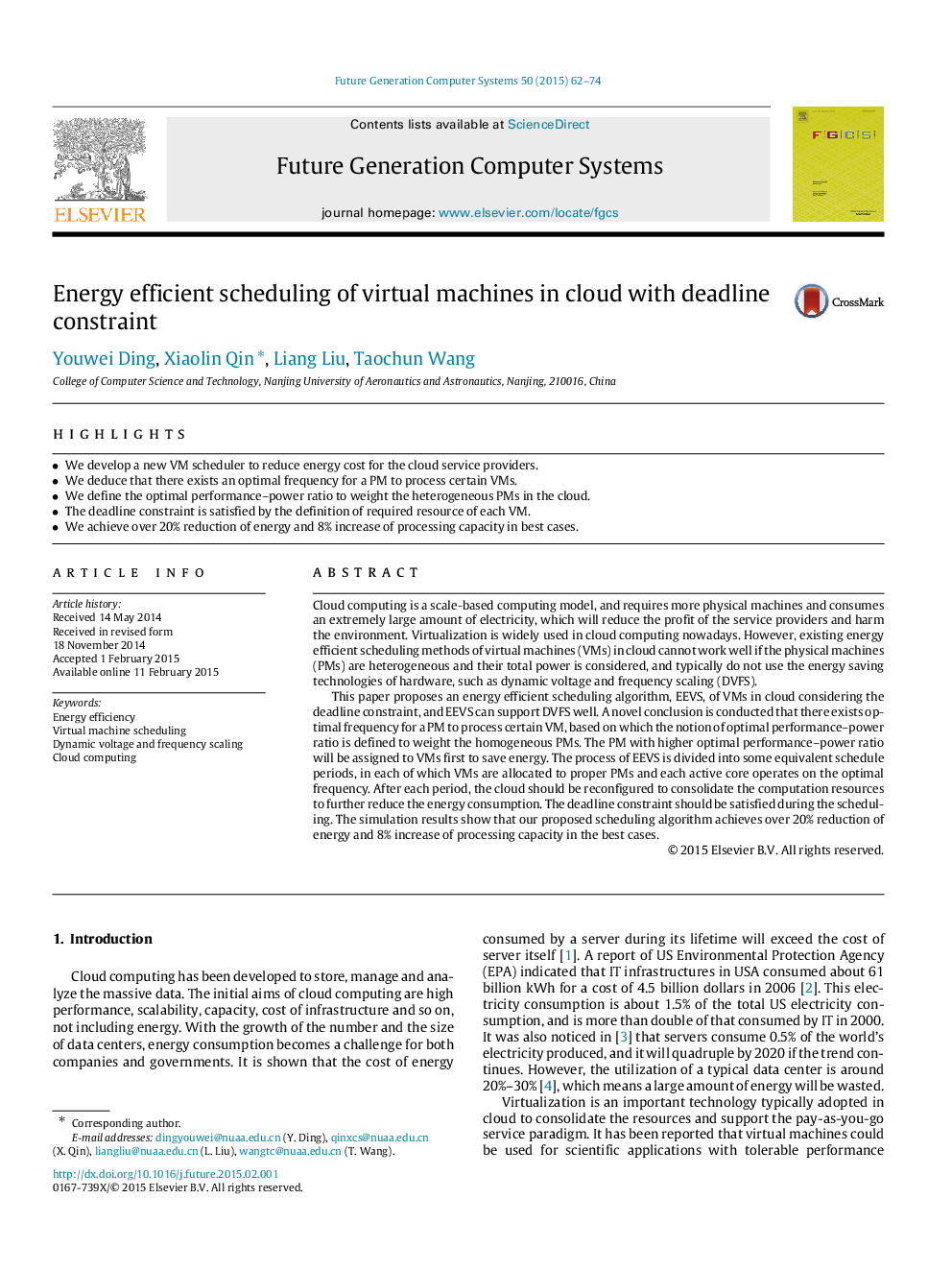| Article ID | Journal | Published Year | Pages | File Type |
|---|---|---|---|---|
| 425623 | Future Generation Computer Systems | 2015 | 13 Pages |
•We develop a new VM scheduler to reduce energy cost for the cloud service providers.•We deduce that there exists an optimal frequency for a PM to process certain VMs.•We define the optimal performance–power ratio to weight the heterogeneous PMs in the cloud.•The deadline constraint is satisfied by the definition of required resource of each VM.•We achieve over 20% reduction of energy and 8% increase of processing capacity in best cases.
Cloud computing is a scale-based computing model, and requires more physical machines and consumes an extremely large amount of electricity, which will reduce the profit of the service providers and harm the environment. Virtualization is widely used in cloud computing nowadays. However, existing energy efficient scheduling methods of virtual machines (VMs) in cloud cannot work well if the physical machines (PMs) are heterogeneous and their total power is considered, and typically do not use the energy saving technologies of hardware, such as dynamic voltage and frequency scaling (DVFS).This paper proposes an energy efficient scheduling algorithm, EEVS, of VMs in cloud considering the deadline constraint, and EEVS can support DVFS well. A novel conclusion is conducted that there exists optimal frequency for a PM to process certain VM, based on which the notion of optimal performance–power ratio is defined to weight the homogeneous PMs. The PM with higher optimal performance–power ratio will be assigned to VMs first to save energy. The process of EEVS is divided into some equivalent schedule periods, in each of which VMs are allocated to proper PMs and each active core operates on the optimal frequency. After each period, the cloud should be reconfigured to consolidate the computation resources to further reduce the energy consumption. The deadline constraint should be satisfied during the scheduling. The simulation results show that our proposed scheduling algorithm achieves over 20% reduction of energy and 8% increase of processing capacity in the best cases.
